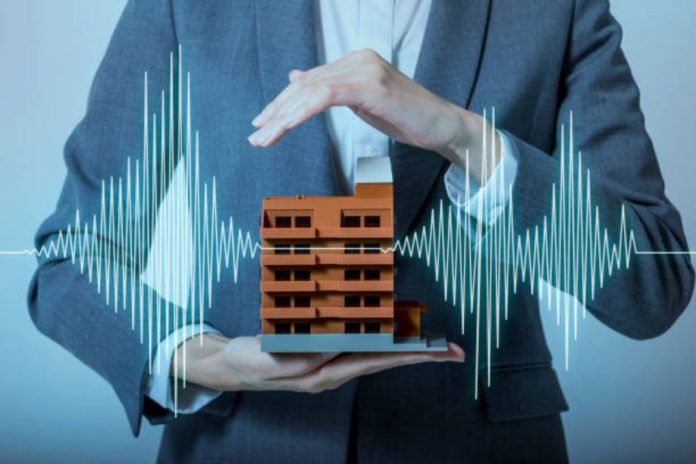Japan is renowned for its advanced earthquake-resistant construction techniques. Due to its location along the Pacific Ring of Fire, Japan experiences frequent seismic activity, necessitating innovative approaches to building safety. The lessons learned from Japan’s experience have significant implications for global construction companies and international construction projects aiming to enhance structural resilience against earthquakes.
Historical Context of Earthquake-Resistant Design in Japan
Japan’s history of devastating earthquakes has driven the development of sophisticated earthquake-resistant technologies. The Great Kanto Earthquake of 1923 and the Kobe Earthquake of 1995 highlighted the need for better building practices. These events spurred extensive research and development, leading to the implementation of stringent building codes and innovative construction methods.
Global construction companies can draw valuable insights from Japan’s historical context. By understanding the evolution of Japan’s earthquake-resistant techniques, international construction firms can adapt and integrate similar approaches in other seismically active regions.
Seismic Isolation Systems
One of the most effective earthquake-resistant technologies developed in Japan is the seismic isolation system. This technique involves placing isolators, such as rubber bearings, between a building’s foundation and its superstructure. These isolators absorb and dissipate seismic energy, significantly reducing the building’s movement during an earthquake.
Global construction companies are increasingly adopting seismic isolation systems in their projects. This technology has been successfully implemented in various structures, from residential buildings to critical infrastructure like hospitals and bridges. The effectiveness of seismic isolation in mitigating earthquake damage makes it a valuable tool for international construction firms operating in earthquake-prone areas.
Reinforced Concrete and Steel Frames
Reinforced concrete and steel frames are fundamental components of earthquake-resistant structures in Japan. These materials provide the necessary strength and flexibility to withstand seismic forces. Japan’s building codes require the use of high-strength concrete and steel, along with specific reinforcement techniques to enhance structural integrity.
International construction firms can benefit from Japan’s expertise in using reinforced concrete and steel frames. By incorporating these materials and techniques, global construction companies can ensure that their buildings are more resilient to earthquakes. The use of advanced materials and engineering principles is crucial for constructing safe and durable structures in seismic zones.
Advanced Building Technologies
Japan has pioneered the development of advanced building technologies designed to enhance earthquake resistance. One notable innovation is the tuned mass damper, a device installed in buildings to counteract seismic vibrations. Tuned mass dampers consist of a large mass attached to the building structure, which moves in opposition to the building’s motion during an earthquake, thereby reducing overall displacement.
Global construction companies are increasingly integrating advanced building technologies like tuned mass dampers into their projects. These technologies offer additional layers of protection and can be tailored to the specific seismic characteristics of different regions. International construction firms can leverage these innovations to improve the safety and performance of their buildings.
Flexible Foundation Systems
Flexible foundation systems are another key aspect of earthquake-resistant design in Japan. These systems involve constructing foundations that can move independently from the superstructure, allowing the building to sway with seismic waves rather than resisting them rigidly. This flexibility reduces the stress on the building and prevents structural failure.
International construction firms can apply the principles of flexible foundation systems to their projects. By designing foundations that accommodate seismic movements, global construction companies can enhance the earthquake resilience of their buildings. This approach is particularly valuable for high-rise structures and critical infrastructure.
Community and Policy Engagement
Japan’s success in building earthquake-resistant structures is not solely due to technological advancements. Community engagement and robust policy frameworks have also played crucial roles. Public awareness campaigns, earthquake drills, and comprehensive building codes ensure that both residents and builders are prepared for seismic events.
Global construction companies can learn from Japan’s holistic approach to earthquake preparedness. By fostering community engagement and advocating for strong building policies, international construction firms can contribute to the overall resilience of urban areas. Collaboration with local governments and communities is essential for creating a culture of safety and preparedness.
Continuous Research and Development
Continuous research and development are integral to Japan’s earthquake-resistant construction practices. Academic institutions, government agencies, and private companies collaborate to advance seismic engineering. This ongoing commitment to innovation ensures that Japan remains at the forefront of earthquake-resistant technology.
International construction firms can benefit from engaging in similar research and development initiatives. By staying abreast of the latest advancements in seismic engineering, global construction companies can implement cutting-edge solutions in their projects. Investing in research and development is crucial for maintaining competitiveness and ensuring the safety of built environments.
The Future of Earthquake-Resistant Construction
The future of earthquake-resistant construction will be shaped by emerging technologies and materials. Innovations such as smart materials that adapt to seismic forces and AI-driven design tools hold great promise. Japan continues to lead the way in exploring these new frontiers, setting a benchmark for global construction companies.
International construction firms have the opportunity to collaborate with Japanese experts and institutions to further advance earthquake-resistant technologies. By embracing innovation and learning from Japan’s experience, global construction companies can enhance their capabilities and contribute to safer, more resilient built environments worldwide.
The lessons from Japan’s approach to earthquake-resistant construction offer valuable insights for the global construction industry. By integrating advanced technologies, adopting flexible design principles, and fostering community engagement, international construction firms can build structures that withstand seismic events and protect lives. As the world faces increasing challenges from natural disasters, the importance of resilient construction practices cannot be overstated.









